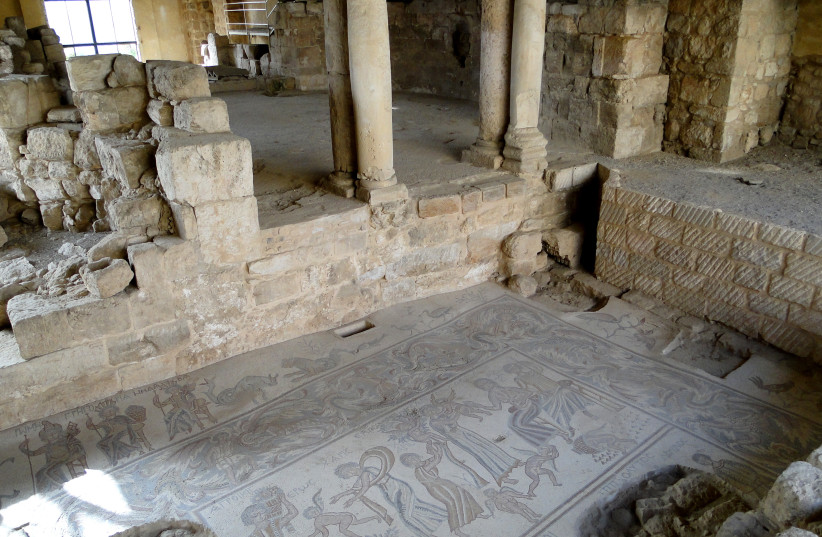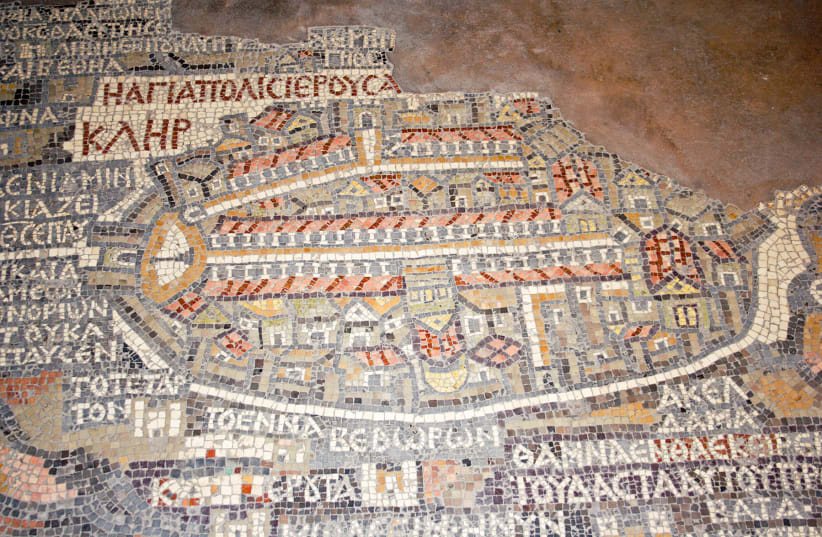Jordanian Tourism and Antiquities Minister Nayef al Fayez visited Madaba, 19 miles southwest of Amman, this week to give a push to the city’s designation as the Arab Capital of Tourism for 2022.
The ministry has plans to encourage visits to Madaba, especially after the Arab League bestowed the coveted title upon it, Al Fayez told reporters on Tuesday.
The announcement will play a role in attracting “pioneering investment projects” strengthening the city’s unique natural, cultural and religious resources, and creating jobs, he said. The ministry seeks to turn Madaba into a center for cultural and religious heritage and home to mosaics and handicrafts, the minister noted.
Al Fayez stressed that the city is rich in heritage and archaeological and religious monuments and is famous for its “picturesque natural landmarks of distinctive valleys and unique mountain views.”
"We are initiating a robust campaign of repaving and refurbishing the roads to the important holy sites as well as improving the look of the city for incoming tourists."
Basma Salaita, Deputy Mayor of Madaba
Deputy Mayor Basma Salaita told the Media Line that the newly elected city council has been working hard to improve the facilities and roads leading to the important churches in the city and the surrounding area.

“We are initiating a robust campaign of repaving and refurbishing the roads to the important holy sites as well as improving the look of the city for incoming tourists,” Salaita said.
Hanna Sawalha, a hotelier and owner of the Nebo Tours company, told The Media Line that Madaba is important for its holy sites validating historical religious narratives.
“The sixth-century mosaic in St. George’s Church is a beautiful documentation that validates Jerusalem, the baptismal site on the east side of the Jordan River, and stands as a living proof of the faith of this region,” he said.
The Madaba Mosaic Map of the region is preserved in the floor of the Greek Orthodox Basilica of Saint George, sometimes called the “Church of the Map.”
Sawalha noted that Madaba used to be the center of Christianity in the region, with seven bishops running churches and dioceses in the region. Madaba is a go-to place for many who visit Jordan, the Christian tourism entrepreneur added.
“It is usually the place to go on your second day in Amman. It is close to the capital and has many wonderful churches and archeological discoveries, and some of the most important mosaics in the entire region. On a clear day you can see Jerusalem from Mount Nebo and the chapel of the Augusta Victoria Hospital on Mount of Olives, he noted.
Religious significance
Sawalha was referring to the view from the historic Memorial of Moses Church, also known as Maqam Nabi Musa, atop Mount Nebo, an elevated ridge of the Abarim mountain range. It was originally built in the second half of the fourth century CE, where, according to the Hebrew Bible, Moses was granted a view of the Promised Land before his death and where, according to a few Islamic scholars, the Prophet Musa – as Moses is known to Muslims – was buried.
The modern Memorial of Moses Church atop Mount Nebo, in Khirbet al-Mukhayyat (commonly known as the town of Nebo), houses some of the best mosaics in Jordan, dating from around 530 CE. The church is part of a functioning monastery, and there is a small but fascinating museum presenting the history of the site.
The church is first mentioned in an account of a pilgrimage made by a Western European Christian woman, Aetheria (Egeria), circa 390 CE.
Salaita also told The Media Line that major work will be performed to renovate the Mukawir (Machaerus) site near Madaba, where it is believed that Herod Antipas, a son of Herod the Great, ordered the beheading of John the Baptist.
“We are hoping to be able to carry out improvements in the site, its facilities, and roads leading to it,” the deputy mayor said.
A major event will be held in Mukawir this fall, on the date that Christians remember the story of what happened to John the Baptist.
Less than an hour’s drive from Madaba along the picturesque King’s Highway is Mukawir, the hilltop stronghold of Herod the Great. Upon Herod’s death, Herod Antipas inherited the fortress, and it is from there that he ordered John the Baptist beheaded after Salome’s fateful Dance of the Seven Veils, according to the Gospel of Matthew.
Jordanian lawmaker Majdi al-Yacoub, a Christian member of Parliament representing Madaba, said the city needs facilities and activities to encourage tourists to stay longer.
“Madaba is a city that reflects a wonderful human mosaic as its peoples from different religious backgrounds reflect a high degree of coexistence,” he said.
